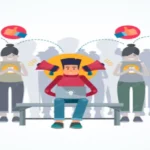Recent developments in AI have prepared the path for exciting new technologies that improve our lives in meaningful ways. OpenAI’s ChatGPT, a cutting-edge conversational AI model, is one such feat. In this piece, we’ll investigate the Chatgot fascinating realm of ChatGPT, examining its features, usages, and effects on the way we communicate.
Understanding ChatGPT
Genesis of ChatGPT
ChatGPT belongs to the GPT (Generative Pre-trained Transformer) family of AI models, which were developed to comprehend and create natural language. ChatGPT expands on the features that made predecessors like GPT-3 so successful by designing a language from the ground up for natural conversation. Using a transformer architecture, a neural network model that is particularly effective when dealing with sequential input, it is able to comprehend and generate natural-sounding text.
Pre-training and Fine-tuning
Understanding the pre-training and fine-tuning phases of ChatGPT development is essential before digging into its applications. The model is first pre-trained using large volumes of publicly available online text to acquire a foundational understanding of syntax, facts, reasoning abilities, and even some biases inherent to the data. The next step is fine-tuning, in which the model is trained on even smaller, more targeted datasets with the help of human reviewers.
Applications of ChatGPT
Conversational Interfaces
ChatGPT is mostly used for creating conversational user interfaces. When these interfaces are built into a website, app, or device, consumers can have a conversational experience with AI. ChatGPT’s adaptability makes it a powerful resource for improving the quality of interactions between users and software.
Content Generation
Article writing, marketing copy production, and creative writing are all areas where ChatGPT excels. Automation of content development is a time and cost-saver for enterprises and individuals because to the technology’s contextual awareness, emulation of writing styles, and production of cohesive and contextually appropriate text.
Educational Support
ChatGPT’s strengths extend into the classroom, where it can function as a virtual tutor or help desk for students. ChatGPT helps provide a more dynamic and individualized education by supplying students with more context, clarifications, and explanations.
Programming Assistance
ChatGPT’s skills to aid with programming-related tasks are useful to developers. ChatGPT can be a useful tool for programmers, helping them with everything from producing code snippets to getting help with troubleshooting.
Challenges and Limitations
Bias in Language
Although fine-tuning can help reduce bias, ChatGPT is not completely unbiased. Content that unintentionally Chatgot replicates or amplifies societal prejudices contained in the training data may be produced. The development of AI models like ChatGPT is hampered by the constant need to address and reduce bias.
Lack of Real-world Understanding
While ChatGPT succeeds at generating contextually relevant responses, it lacks full grasp of the world. Data patterns are used, although a thorough comprehension of the principles being used is Chatgot not guaranteed. Because of this restriction, comments may sometimes be inappropriate or illogical.
Potential for Misuse
The potential for ChatGPT to be abused in ways that result in the creation of false information, the further distribution of false information, or the creation of content that appears authentic but is actually phony is cause for concern. The key to fully realizing the potential of this technology lies in striking a balance between inventiveness and responsible application.
Future Developments
Iterative Improvements
OpenAI’s incremental improvements to ChatGPT show that the company is constantly working to improve and refine the tool. Each new Chatgot release incorporates user suggestions and fixes known issues. ChatGPT’s dedication to constant improvement guarantees that it will adapt to meet the shifting requirements and difficulties of the AI industry.
Increased Customization
Users may have more control over the model’s actions in future versions of ChatGPT. The model can then be tailored to specific domains, applications, or user preferences, expanding its applicability to a wider range of scenarios.
Conclusion
As a cutting-edge example of conversational AI, ChatGPT shows what human-like interactions with robots might be like in the future. It has several potential uses, from powering chatbots and virtual assistants to assisting in content production and programming. As we traverse the expanding environment of AI, it’s crucial to remain conscious of the obstacles and ethical implications involved with such Chatgot powerful tools. ChatGPT is a major advancement in the field of artificial intelligence, and its responsible development and use has the potential to revolutionize human interaction in the digital age.
Frequently Ask Questions (FAQs)
What is ChatGPT?
OpenAI’s ChatGPT represents the cutting edge of conversational AI technology. It is a member of the GPT (Generative Pre-trained Transformer) family of models and was built with the express purpose of comprehending and producing natural language in conversational contexts.
How does ChatGPT work?
To process sequential data efficiently, ChatGPT makes use of a transformer architecture. Pre-training on huge swaths of internet content teaches it grammar, facts, and reasoning abilities. The model is then fine-tuned by being trained on more niche datasets and receiving comments from human reviewers.
What are the applications of ChatGPT?
Conversational interfaces, content creation, instructional support, and even programming help are just some of the many uses for ChatGPT. It helps developers with coding and learning environments, as well as with creating more natural and interactive user experiences.
Can ChatGPT translate across languages and create its own?
ChatGPT can read and write in several languages, so the answer is yes. It is able to function rather well in varied linguistic environments thanks to its training process, which entails exposure to a wide diversity of languages.
How is ChatGPT distinct from other chatbot models?
The transformer architecture that ChatGPT employs to detect and comprehend intricate data connections is what sets it apart from the competition. It’s a part of the GPT family, which is well-known for its versatility and capacity to generate new content. ChatGPT can produce more contextually relevant and human-like responses than rule-based chatbots.











